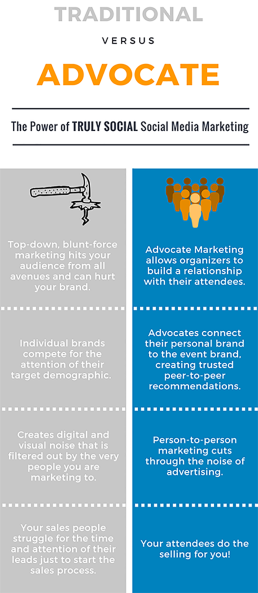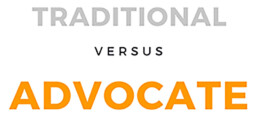Wearable Beacons
Savvy event organizers of the trade show and meeting industry are increasingly turning to wearable beacon technology to deliver real-time analytics and behavioral data to show organizers, exhibitors and attendees. The process is simple; a wearable beacon is attached to and subsequently electronically associated with each registrant’s badge. Receivers then capture the data in any space or common area with all event data accessible in real-time via a desktop or mobile device. The benefits of using wearable beacon technology are substantial for all parties involved.
Show Organizers
Event organizers will get real-time, actionable insights about their events allowing them to do their job better, faster, and cheaper.
• Complete event metrics and data set
• Access to all onsite behaviors
• Heat maps
• CE/CME tracking and crediting
• Helps shape future events
• Typically integrates with 3rd party applications
• Revenue generation
• Customizable dashboard interface
• Experiential features
Exhibitors
Exhibitors want more exposure and qualified leads to justify their event spend.
• Complete booth metrics and lead data
• Access to all visitor behaviors
• Heat maps for large booths
• Helps with marketing tactics for future events
• Typically integrates with 3rd party applications
• Revenue generation
• Customizable dashboard interface
• Experiential features
Attendees
Attendees benefit from a more targeted experience during the event. All of the behavioral data from each attendee is used to make real-time suggestions for sessions, exhibitors, and other attendees doing similar activities.
• Event app integration
• CE/CME tracking and crediting
• Intuitive dashboard interface
• Experiential features
If you’re not currently using wearable beacons for your event, you should at least consider it. The data they provide will enhance your event and help you to take it to the next level. While they may not be commonplace now, they are sure to become an integral part of the industry in the near future.
The Future of Trade Show Reporting

Show organizers are often plagued with trying to gather and make sense of relevant information from current and past shows. Just getting their data can be difficult. Pulling data from multiple sources and compiling lists of data into systems that are not robust enough to handle the information used to be the norm. Fortunately, that has all changed.
New, data-driven business intelligence and analytics systems have been created to help alleviate the pain points that show organizers have experienced. Data is now in the hands of the show organizer, meaning no more back and forth with your registration vendor to mine data and get the information and reports that you need. Technology now gives you the ability to have unlimited custom dashboards and reports of your own rather than viewing your vendor’s standard set of reports.
Registration vendors that use these systems provide advanced capabilities. Taking data from multiple sources and uploading it into their system, as well as customized user dashboards that highlight your preferences in an organized and clean manner are just a couple of examples. Mining registration IDs, billings, credits, refunds, discount codes or demographics is no longer a struggle, nor is comparing your data to past events or to Key Performance Indicators (KPIs). Show organizers have the information at their fingertips to get real-time charts and graphics without waiting weeks for them to be produced.
Think of these systems as Google Analytics for your registration and trade show information. Website information and registration data populate with little to no lag time. Dealing with International data? New reporting platforms allow you to separate out registration data by country. Need to know your highest refund dates? A custom financial dashboard can be created. Want to compare show information from past years? This technology makes it easy to import past data for comparison to the current year. Customization capabilities are endless, allowing for relevant data to be extracted and displayed without hassle.
Updates to data mining and reporting capabilities now leave the ability to collect data in the hands of the show organizer. Simpler and faster technology allows for completely customized dashboards and reporting based on the needs of the show. The headache of getting your data how you want it, when you want it, is a thing of the past.
Triple Play

How many buyers were at your last event? Did your attendance increase from the previous year? While show organizers know the importance of growing their attendance, one major group they shouldn’t overlook is exhibitors. While sessions and other events are certainly important, having the ability to meet and connect with a variety of exhibitors is huge. In an effort to show exhibitors how important they really are, why not give them some special attention? At CompuSystems, Inc. we have done just that by implementing our “Triple Play” program.
The “Triple Play” provides a one-of-a-kind experience for your exhibitor groups, especially those that would be considered high profile. We provide exceptional service, helping them increase their performance and subsequently, your exhibiting company retention rates.
VIP’s
CompuSystems receives a list of the top 20 VIP exhibitors attending the event. They can be VIP’s for various reasons, including their booth size, their years of participation, etc. CompuSystems will contact these special exhibitors in advance, offering comprehensive, personal concierge service, tailored lead management solutions and one-on-one onsite training.
First Time Exhibitors
CompuSystems will reach out to every first time exhibitor to offer them best practices training, as well as a complimentary, optional webinar hosted by a lead capture expert. Making first time exhibitors feel special from the beginning and giving them the keys to succeed is the foundation for a long lasting relationship.
Exhibitor Registration and Lead Retrieval Co-location
Combining exhibitor registration with lead retrieval pick-up provides a one-stop shop for badges and lead devices. It increases lead retrieval product exposure, is easy to find and is convenient (and oftentimes less expensive) for Exhibit Managers as well.
Exhibitors play an integral role in your event. Provide them with the extra attention they deserve, making their participation as meaningful as possible. You may find yourselves noticing an uptick in exhibitor retention and even booth size.
The Importance of Good Website Design
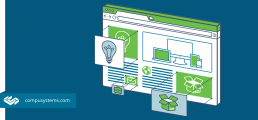
In the trade show industry, the importance of getting people to register for your event is paramount. Every year, show organizers are experimenting with new and different ways to do just that, such as using social media event marketing plugins and offering incentives to register for your next event while at your current event
Gone are the days of mailing in and faxing forms. Arguably, the most important (and fastest) way to get people to register for your event is through your website. I know… everyone knows that. But what everyone doesn’t know is how important it is to make sure your registrants have an excellent user experience. Your websites should be easy to use, intuitive and inviting. If you’re not quite sure how to accomplish this, take a minute to look at the tips below.
Simple Typography
• Choose fonts that are legible.
• Veer away from using a script font on body copy as it’s hard to read.
Good Image Quality
• Crop your images in interesting ways and make sure those images are relevant.
• Do not use pixelated or distorted images; they aren’t good representations of your product.
• Keep your image quality, but consider compressing the image size to a minimum. Smaller images help websites load faster.
Clear Navigation
• Utilize hierarchies – big, medium and small (but legible) text.
• When using buttons, make it clear that it’s a button.
• Concise labeling is important; you want registrants to know what they’re looking at.
Choose Color and Contrast Properly
• Don’t use dark grey font over a light grey background. There isn’t enough contrast making it hard to read.
• Keep the color scheme to a relative minimum. Too much color can be just that… too much.
Consistency is your Friend
• Buttons should look the same throughout.
• Labels should stay consistent – don’t label navigation one thing and the page header another.
Relevant Content
• Display what matters for your audience. If you have a long paragraph, break it apart into smaller chunks that are easier to digest.
• The top half of your web page determines if the user will stay on your website or not; display the most important information here.
By incorporating these design principles into your event registration websites, you will improve your user’s experience and increase your chances of repeat attendees. Your event will be amazing. Make sure people are there to see it.
Create Event Buzz by Combining Social Media With Registration

Clients, as well as registration vendors understand the marketplace need for social media within the registration process. Incorporating online marketing tools, in addition to standard marketing tools to drive traffic to your event is an integral part of a well-rounded, multi-faceted marketing campaign. To stay current with this growing trend, many companies are turning to their registration vendor and InGo, a social media event marketing plugin, for assistance.
Registration Vendor Integration
Your registration vendor likely already has some social media integrations in place. The integrations may vary with each media outlet, however, each should be designed to link the attendee to the Client’s social networking sites, announce that they have registered for the Client’s event, and allow an invitation to be sent to others.
Examples of what these integrations may look like include:
Facebook – After someone registers for your show, they click on an icon to connect with Facebook. They can choose to become a friend or fan of your show and post this information to their Facebook page and their friends’ News Feed Wall. On your show’s Facebook page, fans of your event are able to see the friends they have in common with your show.
Twitter – After completing the registration process, a registrant can opt in and follow your show’s tweets. Twitter users can also tweet show related information and links to all their followers, thus promoting the event.
LinkedIn – Once the registration process has been completed, the registrant has the ability to join a LinkedIn show specific group that will allow them to see which of their colleagues using LinkedIn are currently registered for the show, as well as connect with other people attending your show.
Integration with InGo
As mentioned earlier, InGo is a social media event marketing plugin. You might be wondering what that even means. Well, InGo is a third party company that provides widgets (small chunks of code) to your registration vendor that get incorporated into your attendee registration websites. Their functionality allows for greater social media integration, including:
Social Media Login – The widgets give the attendee the ability to login to the website via Facebook, LinkedIn or Twitter; it speeds up registration by auto-filling fields with social profile data.
Social Posting – Attendees can interact via their social networks after they have completed their registration. They can post to their newsfeed, alerting friends they’re attending your event.
Personal Invitations – Attendees can invite their network to attend, based on targeted keywords and InGo’s socially-smart ranking algorithm.
Who is Attending – Attendees can discover who is attending your event, both in and out of their network and can invite new contacts right from your website.
In summary, social media is an essential marketing channel for trade show organizers. No matter which option you choose, it will make an impact. By encouraging attendees to promote the event for you, you’re creating pre-show buzz, increasing your recognition and building a social community around your event.
Satellite Registration Areas and Mobile Registration Carts
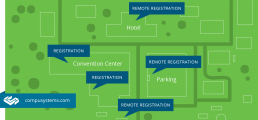
In an effort to make picking up credentials as easy as possible for their registrants, more and more Show Organizers are utilizing satellite registration areas and mobile carts. While most everyone knows that a satellite registration area is simply a remote area from the main registration site, not everyone knows what mobile registration carts are and the benefits they offer. In this blog, we will talk about mobile registration carts, location selection and the potential costs involved with both.
Mobile Registration Carts
Mobile registration carts are a fairly new concept. The carts have wireless Internet capabilities allowing for the cart to be wheeled around to areas in need of registration assistance at any given time; a VLAN is not necessary. They require a standard electrical outlet and typically include:
• A laptop with a scanner running an Express Registration application
• A smartphone or tablet with Internet connectivity and an Express Registration app installed
• A badge printer
Some things to consider when determining how many carts you want to reserve include:
• A temporary staff member is required to operate each cart
• If the carts are being used at a location other than the convention center, it is up to the Client or Decorator to bring the cart(s) and equipment to that location and return it to the convention center at the close of the event
• An additional registration technician(s) may be sent at the vendor’s discretion
Location
Location, Location, Location! We’ve all heard this before. Whether you use satellite registration areas, mobile registration carts, or both, determining their locations can be tricky. Typically, they’re based on the draw and convenience for the attendee/exhibitor. Hotels, airports and remote locations located within the convention center are the most popular. However, if you have an alternative in mind, let your registration vendor know. They will discuss it with you further to determine if it’s a good fit for your business goals and requirements. They should also advise you in such a way where you don’t overload a small remote area by putting it, for example, too close to a bus drop-off location.
Cost
The cost of satellite registration areas and mobile registration carts will vary based on how much equipment is being used, the connection required to access the area, if a technician is needed in the area during the event and more. Your registration vendor will work out the specifics with you, well in advance, to make sure you stay on target with your budget.
No matter which option you choose, offering your registrants a more convenient way to pick up their credentials is always a win. They will appreciate the convenience and you will appreciate that they return for your next event.
What to Do at This Year's Event to Maximize Future Attendance

In the diverse world of events and tradeshows, one thing that all Show Organizers have in common is their desire to grow attendance. Many turn to advance marketing techniques such as e-blasts, custom brochures and special pre-show offers. Increasingly however, Show Organizers are looking at their onsite event for ways to capture attendees. Below are some ideas for what you can do AT your current event to gain attendance for your future event.
Ask attendees if they would like to register for the next event
Just a simple question, asked by an onsite staff member (temporary or otherwise), can get registrants into the database for your next event. There are several ways you can do this, for example: 1) include it as a demographic question on your onsite form 2) scan the bar code on their badge with a wireless scanner. In both instances, before the website goes live for the next year, your registration company can load them into the database as registered attendees. Then, an email can be sent to the registrant allowing them to make any necessary updates to their record and make payment.
Have the website live for your future event AT your current event
More and more, Show Organizers are keeping their websites “live” year round. By doing so, you have the unique ability to see an immediate financial return on those who sign up early. Typically though, attendees need a little convincing before they’re ready to part with money while they’re already at your event. A way to entice them is through incentives. Whether it is a monetary discount, offering a free session or even including a free lunch, incentives can be tailored to marry what’s most important to you and your registrants as well.
Space Draw
Show Organizers not only want to increase attendee registration at their event, but they also want to increase the amount of exhibiting companies that participate. After all, more exhibiting companies can equate to a bigger attendee draw. A popular way to increase booth sales is through an onsite Space Draw at your current event. A Space Draw allows exhibitors to strategically select their booth location for next year’s event during the current event. There are other benefits to an onsite Space Draw as well, such as the ability for exhibitors to talk, in-person, to service providers and show management. Their goal is to help you understand your options and take advantage of the opportunities that are available to you.
Try putting some, or all, of these ideas into place at your next event. A little extra planning in advance can go a long way onsite when it comes to increasing attendance.
What to Look for in an Analytics Platform
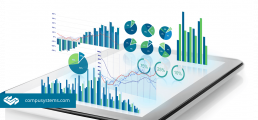
As the collection and use of data continues to be a trending topic in the events and tradeshow industry, the need for an analytics platform is becoming more and more important. While most know what analytics are and what role they play in growing an event, some may wonder, “What exactly is an analytics platform?” Matt Wlezen, CompuSystems’ Product Development Specialist, is here to help and give us some insight into the subject.
An analytics platform allows for the collection of data sources (databases, excel documents, flat files) into a single repository. It allows users to organize data in a logical manner across multiple events, fields, etc. and gives the user the tools to extract and analyze that information. Security permissions on the platform will allow users to see only the information they are allowed to see and reports and dashboards can be created by technical, as well as non-technical personnel. All of these things together equate to increased sales, better inventory management and a reduction in the cost of doing business.
Now that we’re all on the same page with regard to what an analytics platform is, let’s talk about the keys to finding and implementing a successful analytics platform.
Self-Service / Easy-to-use
• Users can create their own reports
• Users can create their own dashboards
• Turns all users into consumers and producers of business intelligence. Instead of needing to contact a technical person to create the report or dashboard, anyone can create it.
Accessibility
• Can access the platform from any device (desktop, tablet, phone)
• Online or offline mode
• Multilingual (allow users to utilize the application in the language with which they are most comfortable)
Data Volumes
• Can load large amounts of data (current and historical)
• Can load data from multiple sources (databases, excel files, external sources, i.e. social media, blogs, mobile devices). Over time, these sources can become isolated from the traditional databases. An analytics platform lets you combine these sources into a single repository.
• Scalability (the platform can handle increasing amounts of data)
Visualizations – Reporting and Dashboards
• Build once and reuse
• Create your own custom reports
• Create your own custom dashboards
• Drill down into the data
Security
• Row level security (only certain users with a certain set of privileges can see the data)
• Create permissions groups to let users do only what they have access to do, i.e. create reports/dashboards, edit reports/dashboards, see certain data sets and load new data sets
The goal of an analytics platform is to remove current industry stress points by providing users with a robust, intuitive and user-friendly way to analyze their data. In turn, you should see in increase in efficiency and boost sales as well.
Tips for Organizers When Going out to Bid for Registration
Going out to bid for a registration provider can be a daunting task for any show organizer. What should you include? Did you give enough or too much information? How does the process work? All of these are great questions. In this post, Pat Fallon, CompuSystems’ Vice President of Business Development, will shed some light on the “do’s” and “don’ts” of going out to bid. Having been in the registration business for over 25 years, Pat has worked on hundreds of Request for Proposals (RFP’s) from a variety of organizers, including profit, non-profit and corporate events.
1. Begin by researching possible registration companies. Talk to your industry contacts to get a good perspective and reference on the quality service companies you should include. It is important to narrow down the list to 3-4 companies so you have the proper amount of time to thoroughly research the companies who are bidding.
2. Consider the timing of the RFP; allow your selected registration companies the opportunity to visit your event before they bid on it. They will be able to better understand your requirements and make educated recommendations in the proposal for process improvements based on their observations.
3. If you do not have a formal RFP prepared, a registration company should be able to help you. Often times, companies have a standard document that will outline the specification needed to draft a comprehensive proposal. Some key items to include in your RFP are:
- Event dates and locations
- Length of potential contract
- Program booklet
- Advance and onsite registration forms
- Is data entry required or is registration 100% web? A quantity breakdown is helpful
- Amount and type of equipment currently used onsite to service your event
- Copies of your existing onsite registration layout, equipment and number of locations
- Registration summary report with the advance and onsite registration numbers broken down by registration category
- Number of websites required, i.e. attendee, exhibitor, press, speaker, VIP, etc. and respective launch dates
- Size of badge stock, number of colors and type of badge holders used
- The number of calls and e-mails for you event if Call Center services are required. This is critical information for the registration company to plan and price accordingly
- Session tracking information-how many rooms are there and how many scanning devices were used at your last event
- Is real time access control required for sessions
- How many exhibiting companies will exhibit at your event
- What 3rd party integrations are required and with which companies
- What Association Management System (AMS) you use and if you require real-time integration
- Percentage of exhibiting companies that order lead retrieval and how many units/apps are rented
- Is there a revenue share on lead retrieval
- Does your registration company sell lists to your exhibitors and what the revenue is
- Housing Company
- Show app provider
- Show floor provider
- Decorating company
4. If you do have a formal RFP prepared, try to include the list of items outlined above. It will save you time in the long run as the registration providers will likely contact you asking about these items if they are not addressed.
5. Lead retrieval data and any subsequent lead participation reports from your current registration company are critical to the RFP process. Most registration companies operate under a similar business model where lead retrieval revenue subsidizes registration costs. Providers need accurate information, including the participation report, to determine their projected revenue and subsequently, your registration fees.
6. Include the following dates in your RFP:
- RFP due date
- Deadline for the question & answer section
- Presentation dates for registration company finalists
- Final decision date
7. Outline your primary objectives in the RFP, as well as any impetus for change. The more information and insight you can provide relative to your key drivers in the evaluation and decision process, the more it will help the bidding companies align their technology, service and price offering with your organization’s business objectives.
8. Allow the registration company an appropriate amount of time to respond; 60 days for a comprehensive proposal is ideal. It gives them time to research your event and formulate key questions.
9. Once you have sent out the RFP, be open to having some phone calls and e-mail correspondence to provide more insight and answer questions in more depth. Sometimes a phone call can be a lot faster than an e-mail going back and forth. Try setting aside specific days during the RFP period that the registration companies can schedule a call or send questions via e-mail; it will help you manage your time with the question and answer process. Preparing the proposal is a lengthy process. Your help is needed to make sure your business requirements are being met.
10. Allow the Sales Executives from the registration companies to speak to key staff members involved in the RFP decision-making process. They will learn more about the requirement for your event from each business unit that is involved, including convention, education, marketing, IT and finance.
11. Expect registration companies to call you after the proposal has been sent to discuss the questions that surface during the review process. If you’re not on schedule with your evaluation, simply share that information and set a target date for a follow-up call.
12. It is important to select the registration companies you think best fit your needs and allow them to come in to present their capabilities for a minimum of 90-120 minutes. You will learn a lot from the presentation and will be able to make a more educated decision.
13. Once you have made your decision, a personal phone call to the registration companies that have responded to the RFP is always appreciated, whether they were awarded the business or not. They put in a substantial amount of effort in presenting their services and may have questions on where they fell short. Your candor can potentially help their service offering for a future opportunity.
We hope you find the tips above helpful for your next RFP process. They will save you time and ensure you have made a well-educated decision on who can best service your organization as your registration business partner.
Traditional vs. Advocate Marketing [Infographic]
There’s no question that your audience is on social media. Billions of people are already using it and that number increases every day. And companies are responding; the fastest growing marketing budget item is social media. Yet only 21% of event marketers say their efforts on social are “effective.” Let’s dive in and explore the differences in Traditional and Advocate Marketing.
We at CompuSystems believe this is because social media represents a different type of opportunity, which requires a different thought process and approach to attain, and results bear this out.
Compared with traditional marketing channels, the people on social media are not just a ‘targeted audience;’ they are, in a sense, personal marketers themselves, looking to connect.
Instead of paying for placement, SEO, and clicks, event marketers have the opportunity to use social media to spark the most effective and brand-building marketing there is: “word-of-mouth” marketing created by Advocates.
Here’s a “Traditional vs. Advocate Marketing” infographic covering why we believe the secret to social media marketing is Advocates.
